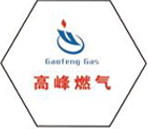
8 月 . 14, 2024 10:11
Back to list
Understanding the Functionality and Importance of Natural Gas Pressure Regulation Systems
Understanding Natural Gas Pressure Reducing Valves
Natural gas is a vital energy source used for heating, cooking, and electricity generation. However, natural gas is transported through pipelines at very high pressures, which must be reduced to safe and usable levels for residential, commercial, and industrial applications. This is where natural gas pressure reducing valves (PRVs) come into play.
What is a Pressure Reducing Valve?
A pressure reducing valve is a mechanical device that automatically reduces the input pressure of a fluid, in this case, natural gas, to a desired output pressure. These valves are essential in managing the flow of gas while ensuring that the pressure remains within the safe operating limits for downstream appliances and equipment.
How Do Pressure Reducing Valves Work?
PRVs function by utilizing a diaphragm, spring, and a seat to control the flow of gas. When high-pressure gas enters the valve, it acts on the diaphragm, which moves to open the valve. The spring provides resistance and helps maintain the desired output pressure. As the pressure in the outlet line decreases, the diaphragm moves back to its original position, thus regulating the flow of gas to maintain the set pressure.
Typically, PRVs can be adjusted to set the output pressure according to the specific needs of an application. This adaptability makes them vital for a wide range of systems, from small residential units to large industrial applications.
Importance of Pressure Reducing Valves
The primary function of PRVs is to ensure safety. Natural gas at high pressures can be hazardous; therefore, reducing the pressure to a safe level mitigates the risk of gas leaks, explosions, and other dangerous conditions. The regulations governing natural gas installations often mandate the use of PRVs for this reason.
Furthermore, PRVs protect downstream equipment and appliances from damage. Many gas appliances, such as furnaces and stoves, are not designed to handle high-pressure gas. By ensuring that the gas pressure remains within the required limits, PRVs help to prolong the lifespan of these devices and maintain their efficiency.
natural gas pressure reducing valve

Types of Pressure Reducing Valves
There are various types of pressure reducing valves, each designed for specific applications. The most common types include
1. Direct-Acting PRVs These are simple devices that respond directly to the pressure change in the system. They are commonly used for low flow or less critical operations.
2. Pilot-Operated PRVs These valves use a pilot mechanism to control a larger valve. They offer better performance in terms of regulating pressure and are suitable for high flow applications.
3. Electronic PRVs These modern valves utilize electronic controls to adjust and maintain pressure. They can be integrated into smart gas systems for enhanced monitoring and control.
Installation and Maintenance
Proper installation and maintenance of natural gas pressure reducing valves are crucial for ensuring their effective operation. It is essential to follow the manufacturer's guidelines and local regulations during installation. Regular inspections and maintenance are also necessary to identify wear and tear, ensuring that valves function correctly without leaks or malfunctions.
Conclusion
Natural gas pressure reducing valves are integral components of gas distribution systems. They offer safety, efficiency, and protection for both users and appliances. Understanding how these valves work, their importance, and the types available can help in making informed decisions regarding natural gas systems. As the demand for natural gas continues to grow, the technology surrounding PRVs will likely advance, improving safety and reliability in gas delivery systems.
Latest news
-
Unlocking The Quality Gas Pressure ReducersNewsNov.01,2024
-
The Role of Gas Pressure Reducing StationsNewsNov.01,2024
-
The Importance and Functionality of Safety Relief ValvesNewsNov.01,2024
-
The Essential Role of Safety Valves in Natural Gas ApplicationsNewsNov.01,2024
-
The Essential Role of Gas Pressure RegulatorsNewsNov.01,2024
-
Enhance Your Premium Gas FiltersNewsNov.01,2024

